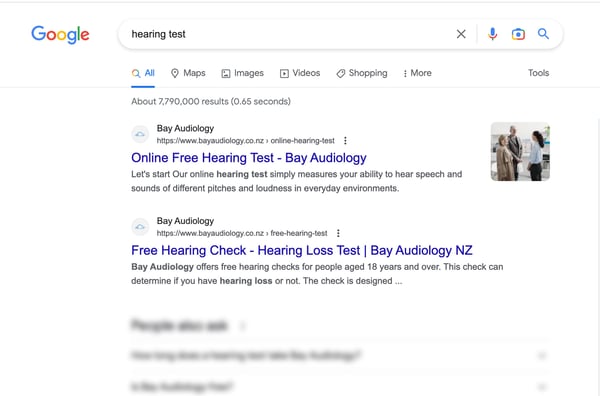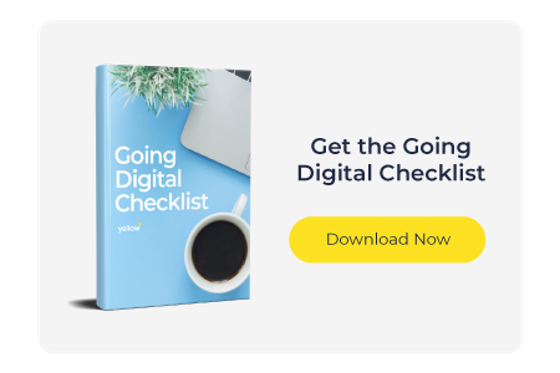Digital Marketing
Resources

The Difference Between Organic & Paid Search
With Google now processing an average of 40,000 searches per second worldwide and a 92.71% market share in all search engine traffic, it’s no surprise that for the average Kiwi business, if you want to be found by your target audience, the best place to focus your energy is into search rankings on Google.
On the flip side of this coin, globally, there are over 4 million other businesses advertising on Google every single year, meaning there is a lot of noise to cut through if you want your website or landing page to rank and be clicked on by your potential customers.
So how can you make sure that your business is seen by the right people?
There are two key techniques that when used in combination will help you to increase relevant traffic and earn more leads that convert; Search Engine Optimisation (SEO) and Paid Search (Google Ads).
In this blog, we’ll cover the difference between the two, and how you can utilise them both to harness the power of Google and establish your business presence online.
What is Paid Search? (Google Ads)
Google defines paid search as;
“When you type something into Google, you are presented with a list of results; or SERP (the search engine results page) which shows organic results and paid results. Paid search results have a little green box with the word “ad” before the listing; this is where a company, like yours, has paid to have their page show up at the top of the list. This can be done through Google Ads search campaign, which charges you when someone clicks on that link. Paid search works to drive traffic to your website through relevant ads.”
Paid ads appear above search ads (see below) and are highly targeted paid advertising directed at prospects searching on Google for the things, filtered by keyword, that your business offers.
The best part about paid search ads on Google, is that you have the opportunity to ‘outbid’ your competitors in order to rank above them in Google results listings. Plus, thanks to Google’s in-depth reporting tools, you’ll be able to accurately gauge how well your search ad is performing according to your goals, and adjust your strategy accordingly.
What is Organic Search Engine Optimisation (SEO)?
SEO is the other half of the Google search engine puzzle when it comes to attracting traffic - and ultimately customers - to your website. As Search Engine Land astutely describes;
“SEO stands for “search engine optimization.” In simple terms, it means the process of improving your site to increase its visibility for relevant searches. The better visibility your pages have in search results, the more likely you are to garner attention and attract prospective and existing customers to your business.”
Search Engine Optimisation is something you can do yourself for free, or hire an agency to run. It requires you to make tweaks across your website, landing pages and blog posts (as well as any other content you’re hosting online that’s connected to your website) to help search engines read and recognise what you’re the industry leader in, and push your website to the top of search rankings when a user who is likely to need your goods or services searches for keywords you are targeting.
Here’s a good example of how this actually looks:

Here, Bay Audiology has intentionally optimised their website so that when someone in New Zealand searches the term ‘Hearing Test’, they’re served Bay Audiology website pages as the top three ranked website pages for this keyword.
Essentially through SEO, Bay Audiology is positioned as the best and most relevant service for ‘hearing tests’, and they haven’t had to pay for an ad.
Sounds good - so what’s the catch?
While SEO is technically free, it isn’t as simple as putting a tone of targeted keywords on your website and automatically beating out your competition. There are a lot of factors that go into a high-ranking website, including:
- Titles, meta-descriptions and on-page SEO targeting your chosen keyword, while still maintaining a high-level of readability and continuing to be user friendly.
- A number of working hyperlinks to other relevant websites and backlinks from other websites and listings, to your own site.
- The amount of traffic that frequents your website beating your competition and increasing your domain authority.
- Content strategies like a ‘topic cluster’ strategy that ties all of the possible content your audience might need into a web of useful content that Google can easily identify.
- Optimising your page loading speeds (you can test out yours, here).
- Make sure all of your alt tags (text alternatives for images) are all aligned to your keywords.
- Frequently update content. Google penalises pages that haven’t been updated or added to in a while.
Plus many more elements - which is why SEO is such a technical task to really nail. You can check out a comprehensive list of what impacts your SEO here.
Last but not least, an SEO strategy is a long-game. Google has to learn over time that your site is better suited to rank than other similar websites and index your site against others. A good SEO strategy takes months to years to build out before you’ll really start seeing results.
How do Paid Search & SEO differ from one another?
While there are some similarities between paid ads and SEO in terms of the common goal of ranking highly on google and using keywords to do so, If we look at how the two differ from each other, there are a few stark comparisons.
- Traffic Duration: In paid search, your ads and listings will only ever show while you have a live campaign running. As soon as the ads are turned off or you run out of budget, your website or landing will no longer list. SEO on the other hand, is ever present and always working.
- Cost: With search ads, you’ll pay every time someone clicks on your ad, and often to rank higher and be seen, you’ll need to bid higher than your competitors which can prove costly. There are ways to be strategic about this and get your costs down though - the Yellow team can help with this. In contrast, SEO doesn’t cost anything when someone clicks on your listing.
- Time: Paid Search is an instant way to get your website seen. As soon as your campaign goes live, you’ll be listed in front of your target audience ready to be seen. As we mentioned earlier, SEO is a long-term strategy and doesn’t typically produce instantaneous results like paid ads do.
Should I be Using Both Paid Search & SEO?
SEO and paid ads should ideally be used in tandem, as they both lend a helping hand to each other and will do wonders for your website traffic.
The most valuable ways that both SEO and paid search can deliver results quickly when used together are:
- Visibility: if you’re able to leverage both organic and paid rankings and your site is shown first in both, customers will immediately view you as the most relevant and useful brand and are more likely to buy from you.
- Data: if you’re able to use the data from your paid search campaigns to inform your SEO strategy (for example, which keywords are converting highly) then you’ll see better results overall.
- Target all stages of the buyer's journey: through using both paid ads and SEO, you’ll be able to create content, targeted advertising, website and landing pages that are tailored to reach your customers with the right messaging at the right time, no matter where they are in their decision making process.
Help! I don’t know where to start with SEO or Paid Search
No problem - the first thing we’d recommend doing is downloading our FREE Going Digital Checklist below.
If you already know you need to work on Paid Search and SEO, and you want to make sure you’re putting your time and money in the right place, we’ve got a team of search engine specialists at the ready that can help you with managing google ads, define your goals, generate leads, and lift your presence online.
